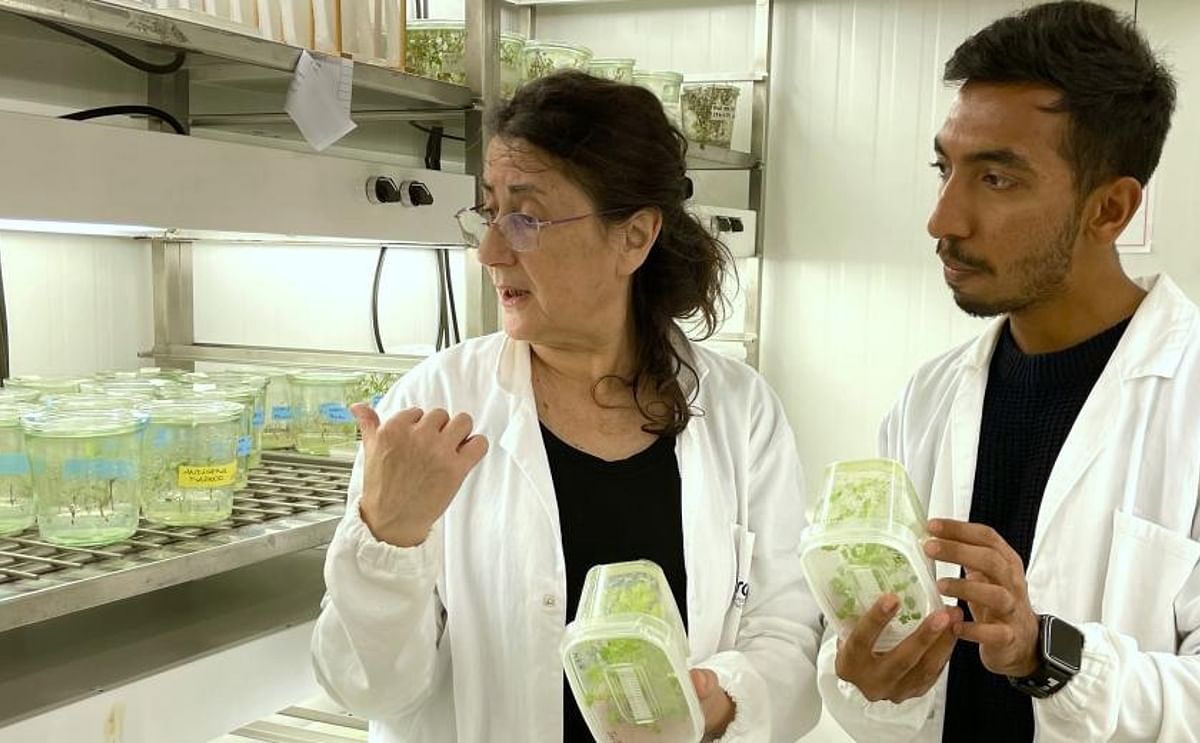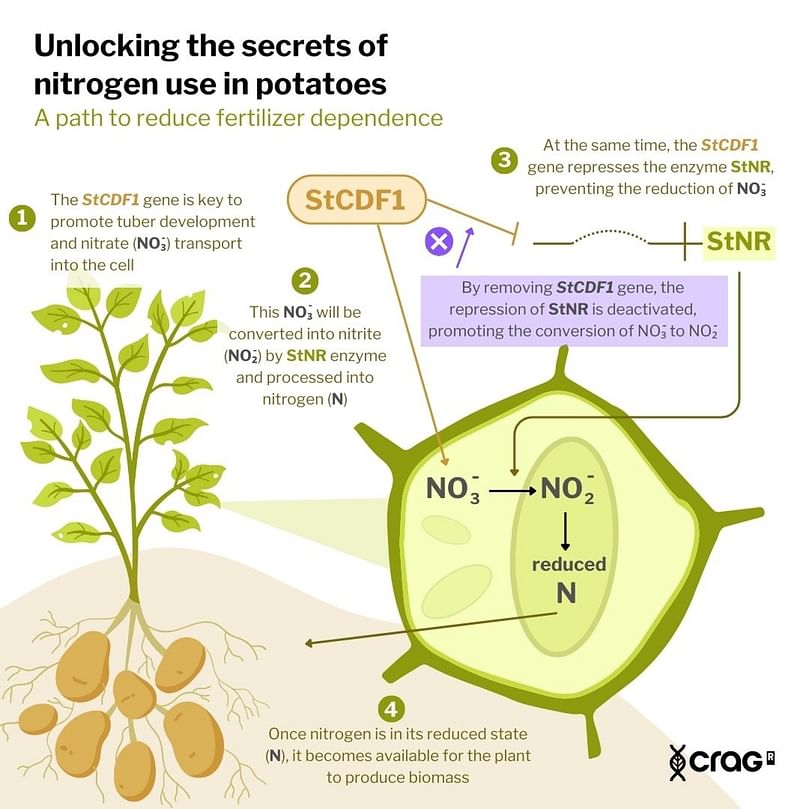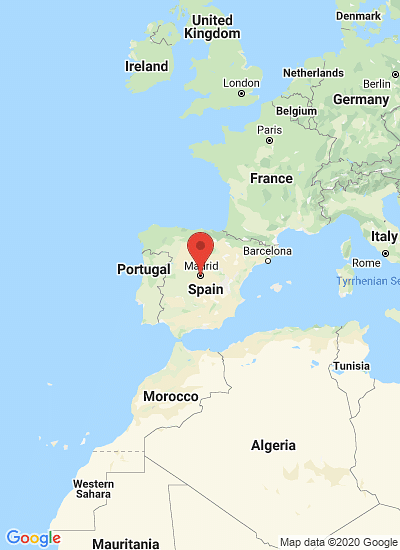Salomé Prat, a researcher from the Spanish National Research Council (CSIC) at the Centre for Research in Agricultural Genomics (CRAG) and Christian Bachem, a researcher at Wageningen University (WUR).
Improving nitrogen use efficiency in potatoes on a genetic level

The study "StCDF1: A 'jack of all trades' clock output with a central role in regulating potato nitrate reduction activity" uncovers the role of the StCDF1 gene in improving nitrogen use efficiency in potatoes, paving the way for more sustainable and high-yielding potato varieties.
- Researchers have identified the StCDF1 factor as a key regulator of nitrogen use in potatoes, influencing both nitrate uptake and tuber development.
- Inactivation of the StCDF1 gene in modern potato cultivars allows for increased conversion of nitrate to nitrite, an essential step for nitrogen assimilation.
- This discovery paves the way to the development of potato cultivars that are both high-yielding and more efficient in nitrogen usage.
In a world where food security is increasingly threatened by climate change and the population growth, researchers are turning to genetic solutions to enhance crop resilience. A recent study led by Salomé Prat, a CSIC researcher at CRAG has unveiled groundbreaking findings on the role of the StCDF1 gene in nitrogen use efficiency in potatoes (Solanum tuberosum), a staple food for millions of people.
The study, published in New Phytologist in collaboration with the group of Christian Bachem from the University of Wageningen (WUR), expands the role of StCDF1 beyond its previously known function as a central regulator of day length tuberization. Tuber formation is an adaptive strategy of potato plants for winter survival and is triggered by shorter day lengths and cooler temperatures perceived by the plant as the approach of winter.
Maroof Ahmed Shaikh, first author of the study:
"Integration of these environmental signals encourages tuber formation. These organs stay dormant in the soil over winter and wake up in spring to form a new plant. We often notice this awakening at home when older potatoes begin to sprout."
In wild potatoes, tuber formation is strictly dependent on short days. However, modern cultivars carry mutations in a locus called earliness that allows them to escape this strict control. This adaptation took place after potatoes were introduced to Europe, resulting in early-maturing varieties that carry one or more copies of these alleles. These naturally occurring mutations enhance the stability of the StCDF1 factor, a key player in the day length pathway that modulates the expression of SP6A, a member of the FLOWERING LOCUS T family and a main tuberization signal.

Unlocking the secrets of nitrogen use in potatoes: A path to reduce fertilizer dependence
Enhancing nitrogen utilization through genetic innovations The findings reveal that StCDF1 not only acts as an upstream regulator of the tuberization pathway, but also directly controls the expression of several genes involved in nitrogen assimilation and transport. Through a combination of DNA binding and gene expression studies, researchers observed that StCDF1 binds the promoter region of Nitrate Reductase (StNR), an enzyme that catalyses the rate-limiting step in nitrate reduction within the cell. Surprisingly, potatoes possess a single gene copy for StNR, unlike most plants that have several copies, allowing them greater efficiency in nitrate utilization.
The research employed advanced techniques, including DAP-seq (DNA Affinity Purification and sequencing), to identify the direct targets of StCDF1. This method revealed DNA recognition peaks in several nitrogen responsive genes.
Knock-down lines of StCDF1, which reduced transcript levels, showed improved performance under nitrogen-limiting conditions due to the lifted repression of StNR. With StCDF1 silenced, the potato plants could express more StNR, leading to better nitrogen utilization. Additionally, the discovery of polymorphisms in the StNR regulatory region indicates that these genetic variations may have evolved in early potato cultivars as a compensatory mechanism, helping these plants adapt to the adverse effects of StCDF1 stabilization, and thereby enhancing their nitrogen assimilation capabilities.
Salomé Prat:
"He novelty of our research lies in uncovering StCDF1's dual role in regulating both tuberization and the nitrogen assimilation pathways. This insight reveals new genetic and molecular targets for enhancing nitrogen utilization in potatoes."
Implications for sustainable agriculture
The implications of this research are profound, contributing to the broader goal of sustainable agriculture. The study provides molecular targets that can be used for breeding climate-smart potato varieties requiring fewer nitrate inputs for high tuber production. Breeders could leverage this knowledge to develop potato varieties less dependent on chemical fertilizers.
In conclusion, this study not only enriches our understanding of potato biology but also serves as a ray of hope for sustainable agriculture, demonstrating the power of plant science in addressing global challenges. By harnessing genetic advancements, the agricultural sector can move towards more resilient and environment-friendly practices, ensuring food security for future generations.








